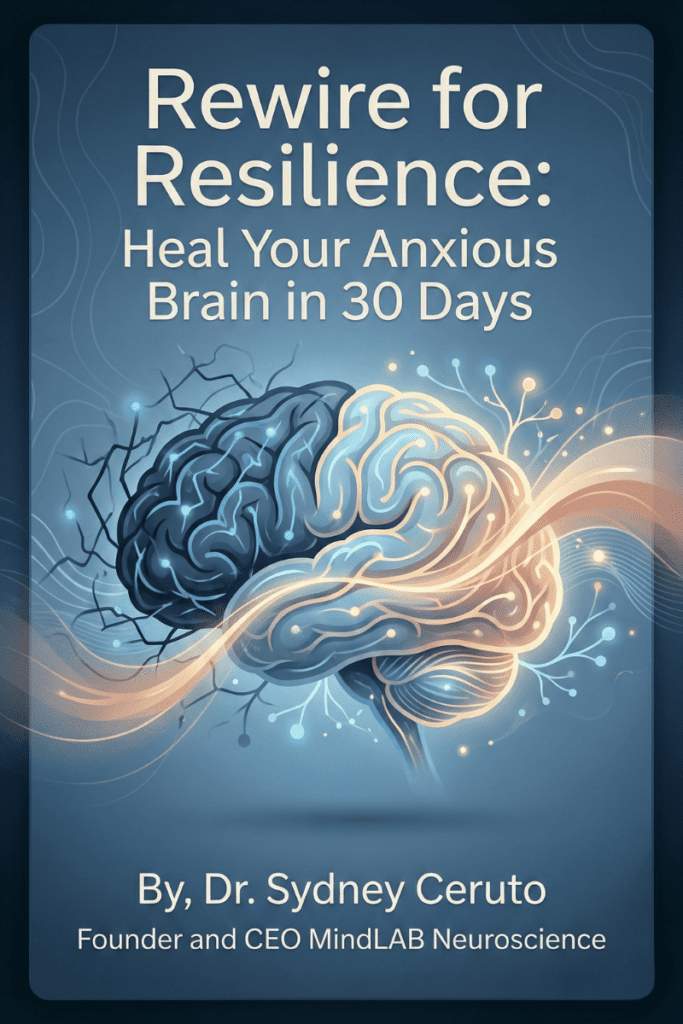Do you often find yourself trapped in a vicious cycle of worst-case scenarios and overwhelming anxiety? If so, you’re not alone. Catastrophic thinking, a common cognitive distortion, can hold you back from reaching your full potential and living a fulfilling life. But what if we told you that by understanding the neuroscience behind this phenomenon and implementing practical strategies, you could break free from this mental prison and unlock a world of resilience and personal growth?
Unraveling the Catastrophic Thinking Trap
At its core, catastrophic thinking is the tendency to automatically assume the worst possible outcome in any given situation, regardless of the actual likelihood of that outcome occurring. This distorted thought pattern is characterized by:
- Overgeneralization: Viewing a single negative event as a never-ending pattern of defeat.
- Black-and-white thinking: Seeing situations in extremes, with no middle ground or room for nuance.
- Emotional reasoning: Believing that if you feel something strongly, it must be true.
When caught in the grip of catastrophic thinking, your mind becomes a breeding ground for fear, anxiety, and self-doubt. But by shining a light on these cognitive distortions, you can begin to take back control and cultivate a more balanced, resilient mindset.
The Impact of Catastrophic Thinking on Mental Health
Catastrophic thinking can take a significant toll on your mental health, leading to increased stress, anxiety, and even depression. When left unchecked, this negative thought pattern can create a self-fulfilling prophecy, causing you to avoid challenges and miss out on valuable opportunities for growth and success.
Irrational Worstcase Outcomes Catastrophizing
One of the hallmarks of catastrophic thinking is the tendency to fixate on irrational worst-case outcomes. Over my two decades guiding clients, I have found that most people are prone to ruminating about irrational worstcase outcomes. This process, known as catastrophizing, involves imagining the most extreme and unlikely negative consequences of a situation, even when there is little or no evidence to support these fears. Catastrophizing can quickly spiral out of control, leading to intense anxiety and a sense of helplessness.
Catastrophic thinking often goes hand in hand with rumination, which is the repetitive and persistent dwelling on negative thoughts and emotions. When individuals engage in rumination about irrational worst-case outcomes, they become trapped in a vicious cycle of negative thinking that can be difficult to break. This combination of catastrophizing and rumination can significantly impact mental well-being and hinder personal growth.

The Neuroscience of Catastrophic Thinking
Recent advancements in neuroscience have revealed the underlying mechanisms that fuel catastrophic thinking. When we engage in this type of distorted thinking, two key brain regions come into play:
- The amygdala: This almond-shaped structure, known as the brain’s “fear center,” becomes hyperactive, leading to an exaggerated perception of threat and a heightened emotional response.
- The prefrontal cortex (PFC): Responsible for rational thinking and emotional regulation, the PFC can become overwhelmed by the amygdala’s signals, making it difficult to maintain a balanced perspective.
By understanding this delicate interplay between the emotional and rational centers of the brain, we can begin to develop targeted strategies to rewire our neural pathways and promote a more resilient, growth-oriented mindset.
The Role of Neuroplasticity in Overcoming Catastrophic Thinking
Neuroplasticity, the brain’s ability to reorganize and form new neural connections, plays a crucial role in overcoming catastrophic thinking. By consistently challenging negative thought patterns and focusing on more positive outcomes, you can gradually rewire your brain to respond to challenges with resilience and adaptability.
The Power of Neuroplasticity: Rewiring Your Brain for Success
Neuroplasticity, the brain’s remarkable ability to reorganize itself by forming new neural connections, is the key to transforming catastrophic thinking. By consistently challenging negative thought patterns and focusing on more positive outcomes, you can gradually weaken the neural pathways associated with catastrophic thinking and strengthen new, more empowering ones. Here are some practical techniques to get you started:
- Thought reframing: When catastrophic thoughts arise, take a step back and ask yourself, “Is this the most realistic outcome, or am I focusing on the worst-case scenario?” By questioning the validity of your negative thoughts, you can begin to shift your perspective and create space for more balanced, realistic thinking.
- Mindfulness and self-compassion: Cultivate a practice of mindfulness and self-compassion to help you stay grounded in the present moment and respond to challenging situations with kindness and understanding. Regular meditation, deep breathing exercises, and self-care rituals can be powerful tools for promoting emotional resilience and reducing the impact of catastrophic thinking.
- Exposure therapy: Gradually expose yourself to situations that typically trigger catastrophic thoughts, starting with less challenging scenarios and progressively working your way up. By facing your fears in a controlled, supportive environment, you can help your brain learn that these situations are not as threatening as they seem, reducing the intensity of catastrophic thinking over time.
- Surrounding yourself with positivity: Seek out supportive relationships, engage in activities that bring you joy, and consume content that inspires and uplifts you. By immersing yourself in a positive, growth-oriented environment, you can create a strong foundation for mental resilience and well-being.

Building Resilience Through Consistent Practice
Rewiring your brain to overcome catastrophic thinking is an ongoing process that requires consistent practice and self-reflection. By incorporating these techniques into your daily life and remaining patient with yourself, you can gradually build the mental resilience needed to navigate life’s challenges with greater ease and confidence.
Embracing a Life Beyond Catastrophic Thinking
By understanding the neuroscience behind catastrophic thinking and harnessing the power of neuroplasticity, you can break free from the shackles of negativity and unlock your mind’s infinite potential. As you continue to challenge distorted thoughts, cultivate self-awareness, and implement positive coping strategies, you’ll find yourself better equipped to navigate life’s challenges with courage, resilience, and unwavering self-belief.
Remember, mastering your mind is a journey, not a destination. Be patient with yourself, celebrate your progress, and trust in your ability to transform your life, one thought at a time. With dedication and practice, you can conquer catastrophic thinking and unleash a brighter, more fulfilling future.
Taking the First Step Towards Transformation
So, are you ready to embark on this transformative journey? Start small, stay consistent, and watch as your inner world begins to shift in profound and powerful ways. Your mind is your most valuable asset – invest in it wisely, and the rewards will be limitless.





